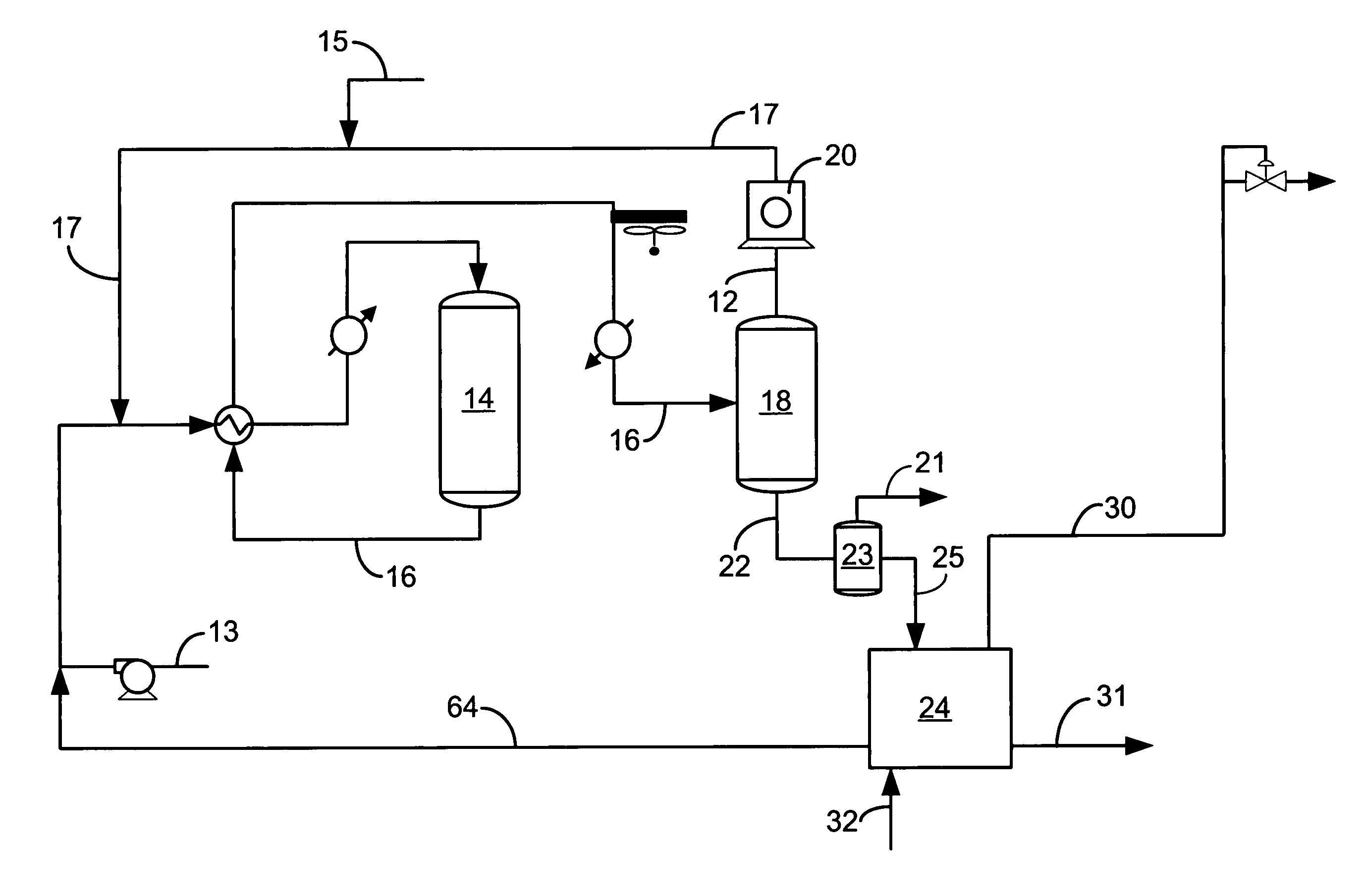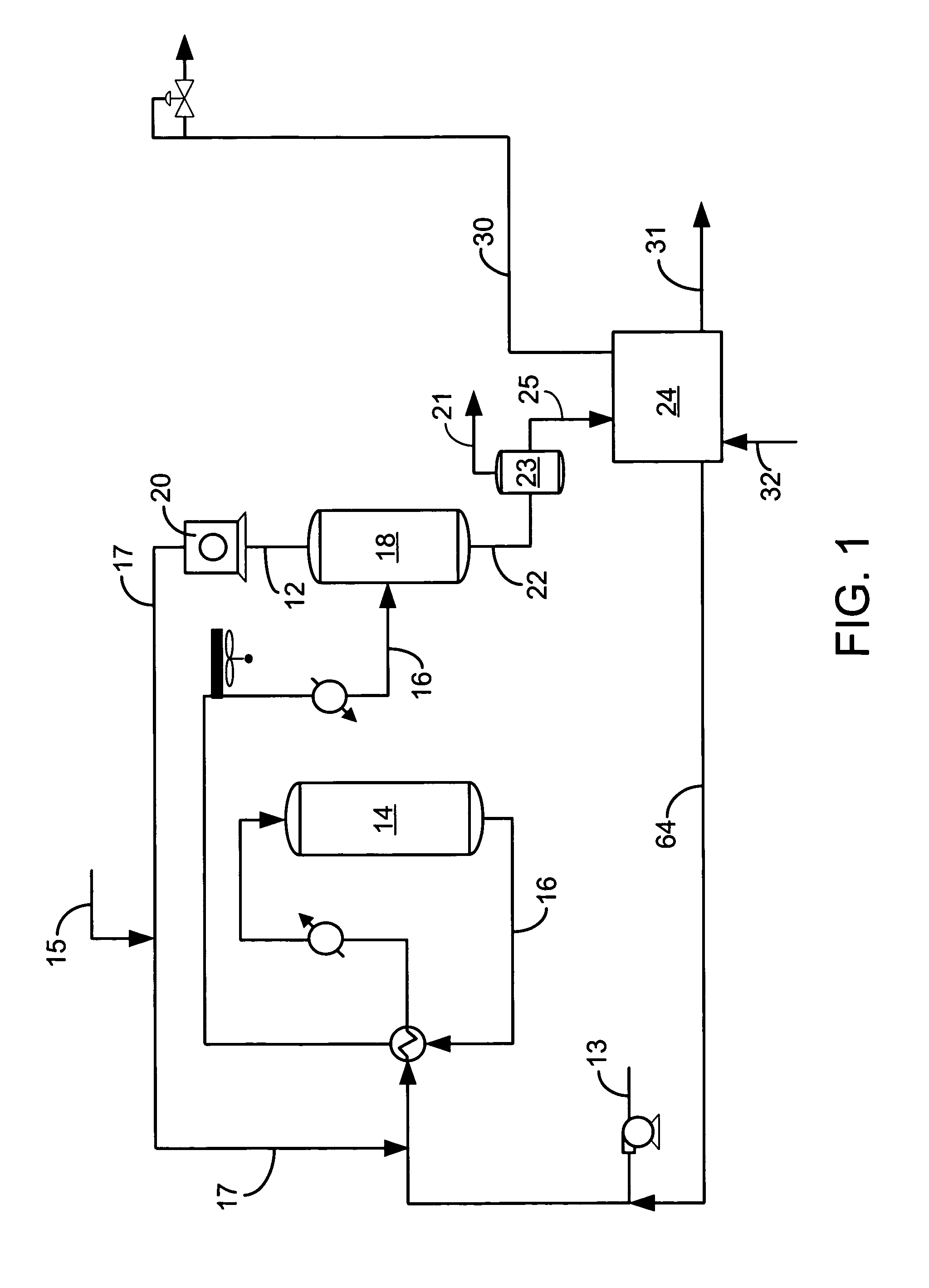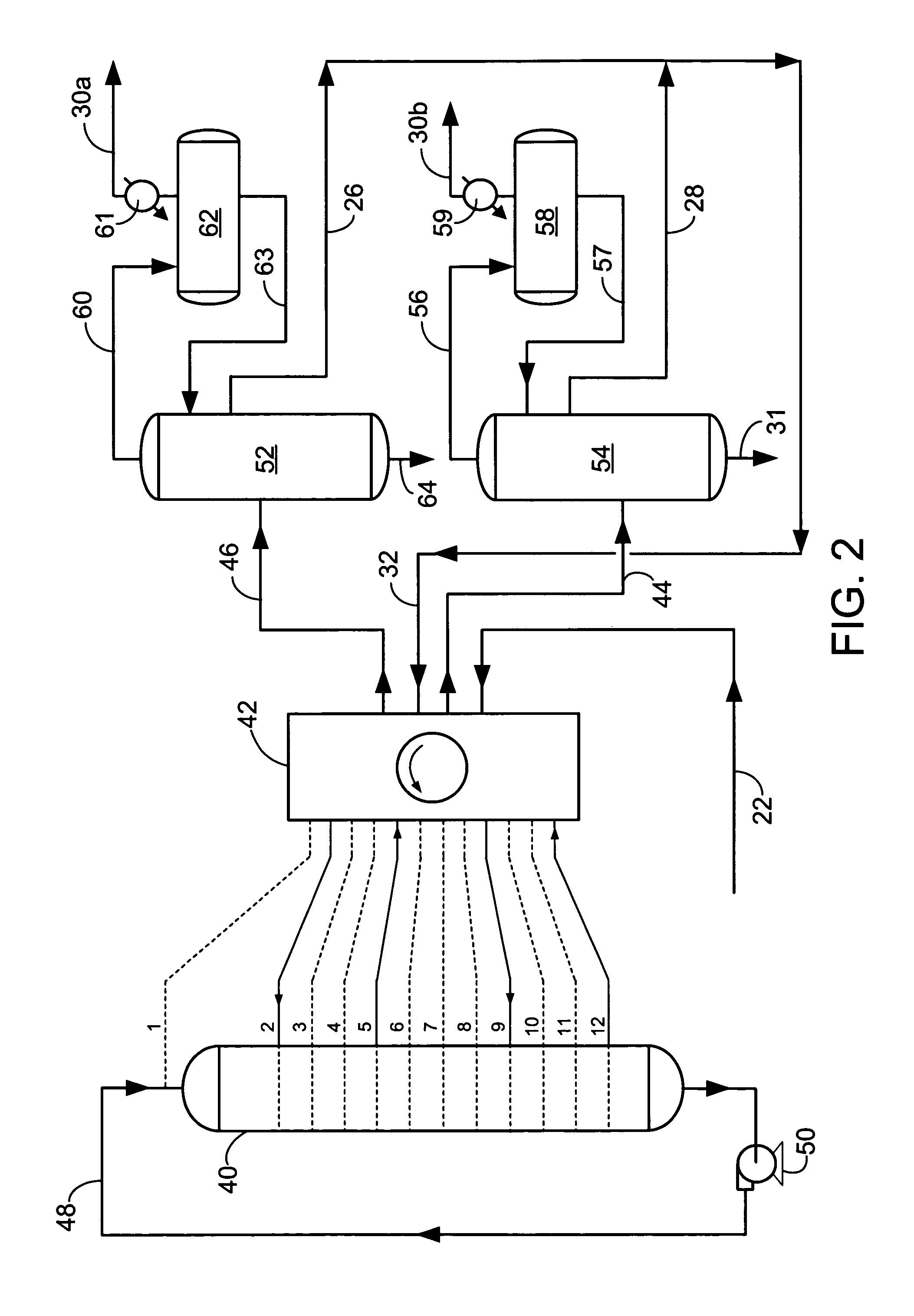Isomerization process with adsorptive separation
a technology of isomerization and separation process, which is applied in the direction of hydrocarbon preparation catalysts, separation processes, hydrocarbon oil treatment products, etc., can solve the problems of further restrictions on octane blending components, and achieve the effect of increasing the branching of feedstream hydrocarbons
- Summary
- Abstract
- Description
- Claims
- Application Information
AI Technical Summary
Benefits of technology
Problems solved by technology
Method used
Image
Examples
Embodiment Construction
[0014]Applicants have discovered that the isomerization of a feedstock containing C5 and C6 hydrocarbons can be successfully achieved in a less costly flowscheme than that currently in use in industry. Specifically, in an isomerization process using a solid catalyst, the traditional stabilizer column may be eliminated and the separation of light ends from isomerized products, usually performed by the stabilizer column instead may be accomplished by a combination of a flash drum and the adsorptive separation zone. Optionally, lower octane methylpentanes and normal hexane may be recycled to the isomerization zone to increase the octane number. In general, a feedstock comprising C5 to C6 hydrocarbons is contacted with an isomerization catalyst in an isomerization zone at isomerization conditions and thereby increases the branching of the feedstream hydrocarbons and produces an isomerization zone effluent stream that comprises at least hydrogen, normal pentane, normal hexane, methylbuta...
PUM
 Login to View More
Login to View More Abstract
Description
Claims
Application Information
 Login to View More
Login to View More - R&D
- Intellectual Property
- Life Sciences
- Materials
- Tech Scout
- Unparalleled Data Quality
- Higher Quality Content
- 60% Fewer Hallucinations
Browse by: Latest US Patents, China's latest patents, Technical Efficacy Thesaurus, Application Domain, Technology Topic, Popular Technical Reports.
© 2025 PatSnap. All rights reserved.Legal|Privacy policy|Modern Slavery Act Transparency Statement|Sitemap|About US| Contact US: help@patsnap.com



